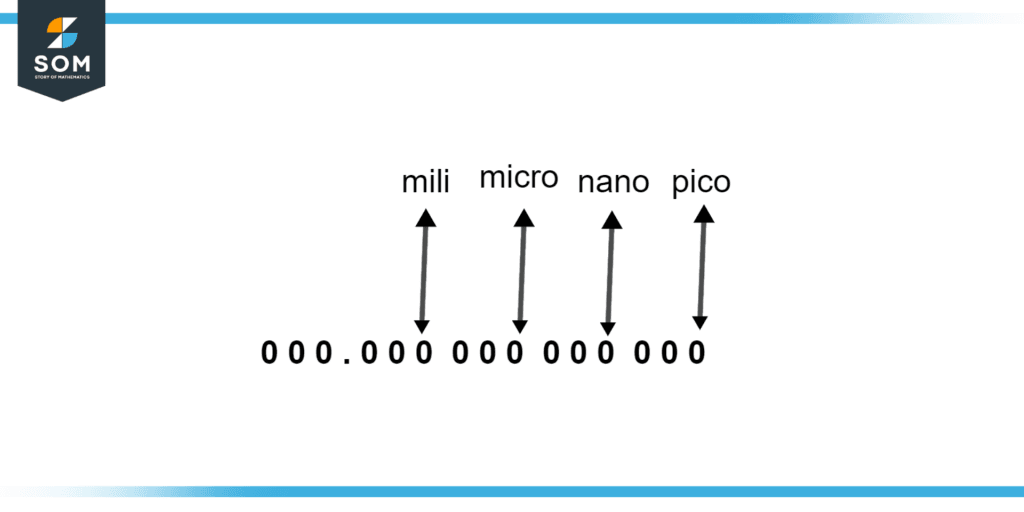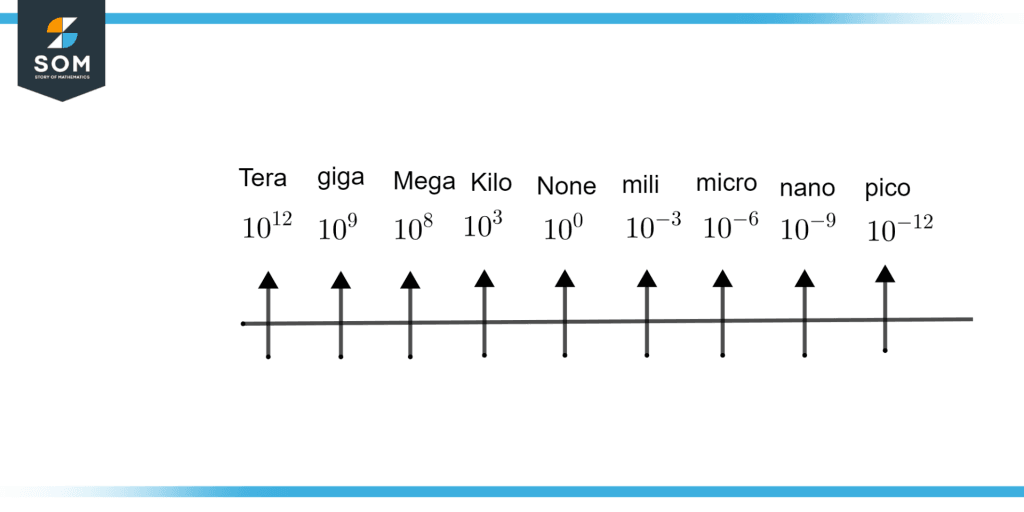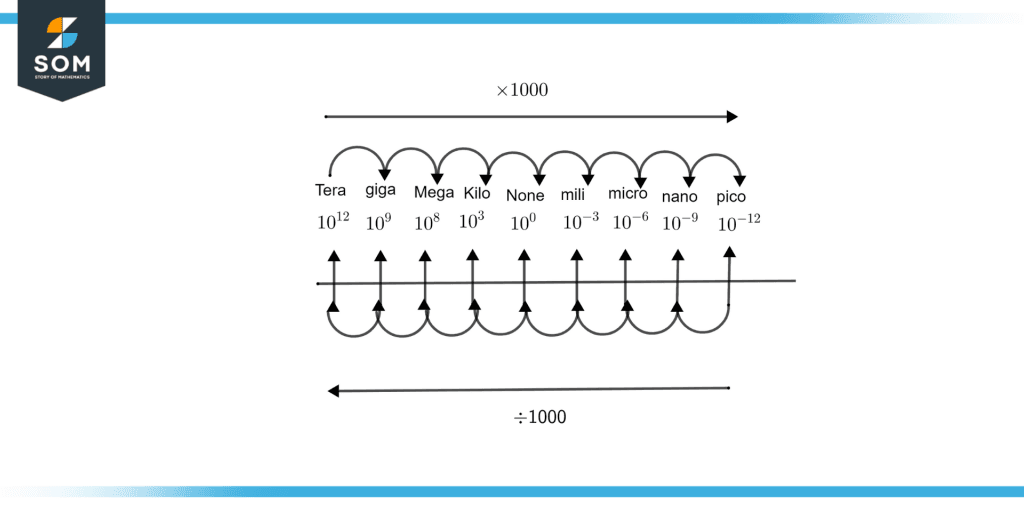JUMP TO TOPIC
Micro|Definition & Meaning
Definition
In the metric system, the prefix “micro” denotes a factor of 10 to the power minus 6 or one-millionth. It is denoted by the symbol $\mu$, pronounced: “mew.”
It is useful when working with measurements involving very small quantities, as is often the case in biology and electronics.

Figure 1 – Micro and other prefixes
The prefix, confirmed in 1960, derives from the Greek word mikrós (μικρός), which means little. The Greek letter Mu (M, $\mu$) serves as the inspiration for the prefix symbol. It is the only prefix in the SI that does not utilize a letter from the Latin alphabet. In situations when the character is not available, the prefix mc is frequently used.
For example, mcg frequently refers to a microgram. Additionally, the letter u can occasionally be used in place of the character $\mu$.
Prefixes are important morphemes that begin words in the English language. The prefix “micro” comes from a Greek word that originally meant “small.” A few notable examples of terms with this prefix in the English language are a microphone, microwave, and micromanager.
The phrase “microscope,” a device that enables the user to see “tiny” living things, is a simple way to remember that the prefix micro- denotes “small.”

Figure 2 – Metric Prefix Scale
Abbreviations Conventions
The use of the standard microgram sign, “$\mu$ g” in prescription or chart entry is discouraged by house rules in some healthcare facilities due to the possibility of administering the wrong dose due to poor handwriting interpretation. The two options are to shorten it to “mcg” or to write “microgram” in its entirety.
The deprecation, however, does not apply to all organizations and circumstances in the industry.
For instance, certain clinical laboratory reports follow it while others do not, and in the academic world of physical sciences, “$\mu$ g ” continues to be the only recognized abbreviation. The mu can also be used in place of the medical data exchange that complies with the Health Level 7 (HL7) standard.

Figure 3 – Prefix conversion
Figure 3 illustrates conversion of one prefix to another. In order to convert from bigger unit to smaller unit we will multiply with 1000 and for conversion from smaller to bigger unit we have to divide with 1000.
Examples of Use of Micro
The diameter of typical bacteria ranges from 1 to 10 micrometres ($\mu$m).
Eukaryotic cells generally have a diameter of 10 to 100 micrometres ($\mu$m).
1000000 microseconds ($\mu$s) make up one second.
Usage of Micro in Mathematics
- Despite the fact that $\mu$ is often used to signify certain items, any Greek letter or other symbols may be used as a variable name.
- A unit in the theory of measures.
- Computability theory with recursion theory minimization.
- A component in ordinary differential equations that integrates the speed of artificial neural network learning.
- A fuzzy set’s degree of membership.
- The mathematical Möbius function.
- The predicted value in probability and statistics, or the population mean.
Usage of Micro in Physics and Engineering
- Mass reduction in the two-body issue.
- The gravitational parameter that is commonly used in astronomy.
- Mass per unit length in strings and other one-dimensional objects, also known as linear density.
- Electromagnetism’s permeability
- The current-carrying coil’s magnetic dipole moment.
- fluid mechanics’ concept of dynamic viscosity.
- The voltage gain or amplification factor of a triode vacuum tube.
- The ability of a charged particle to move electrically.
- The ratio of an aircraft’s airspeed to its rotor’s tip speed is known as the rotor advance ratio.
Usage of Micro in Mechanics
- The result of multiplying the mass M by the gravitational constant G is the standard gravitational constant for a celestial body.
- A planet’s orbital zone’s true degree of purity is measured experimentally by the planetary discriminant, which is also used to define a By dividing the candidate body’s mass by the combined mass of the other objects in its orbital zone, one may determine the value of the parameter $\mu$.
Usage of Micro in Music
- Mike Paradinas is an electronic musician who operates the label Planet $mu$ and performs under the stage name $mu$-Ziq, which is pronounced music.
- In the anime Love Live! School Idol Project, the term is used to refer to the school idol group $mu$’s, pronounced muse, which consists of nine singing idols.
Usage of Micro in Biology and Pharmacology
- Population genetics’ mutation rate
- IgM-type antibodies are a subclass of immunoglobulin heavy chains.
- It serves as a key opiate receptor.
Some Examples of Micro ($\mu$)
Example 1
Convert 1 $\mu$ meter to the millimeter.
Solution
As we want to convert micro-meter to milli-meter and we know that the prefix milli is bigger than micro so we will divide milli with 1 $\mu$ meter. From the metric prefix scale illustrated in figure 2, we can conclude that micro is equal to $10^{-6}$ and milli is equal to $10^{-3}$.
$\dfrac{1 \, \mu\text{m} }{10^{-3}}$
$10^{-6} \times 10^3$ m
$10^{-6+3}$ m
$10^{-3}$ m
1 $\mu$m = 0.001 m
Example 2
Convert 1 $\mu$ meter to the centimeter.
Solution
As we want to convert micro-meter to centimeter and we know that the prefix milli is bigger than centi so we will divide centi with 1 $\mu$ meter. From the metric prefix scale illustrated in figure 2 we can conclude that micro is equal to $10^{-6}$ and centi is equal to $10^{-2}$.
$\dfrac{1 \, \mu \text{m} }{10^{-2}}$
$10^{-6} \times 10^{2}$ m
$10^{-6+2}$ m
$10^{-4}$ m
1 $\mu$m = 0.0001 m
Example 3
Convert 1 $\mu$ meter to the nanometer.
Solution
As we want to convert micro-meter to nono-meter and we know that the prefix nano is smaller than micro so we will multiply by 1000 as illustrated in figure 3
$10^{-6} \times 10^{+3}$ m
$10^{-6+3}$ m
$10^{-3}$ nm
All images were created using GeoGebra.
